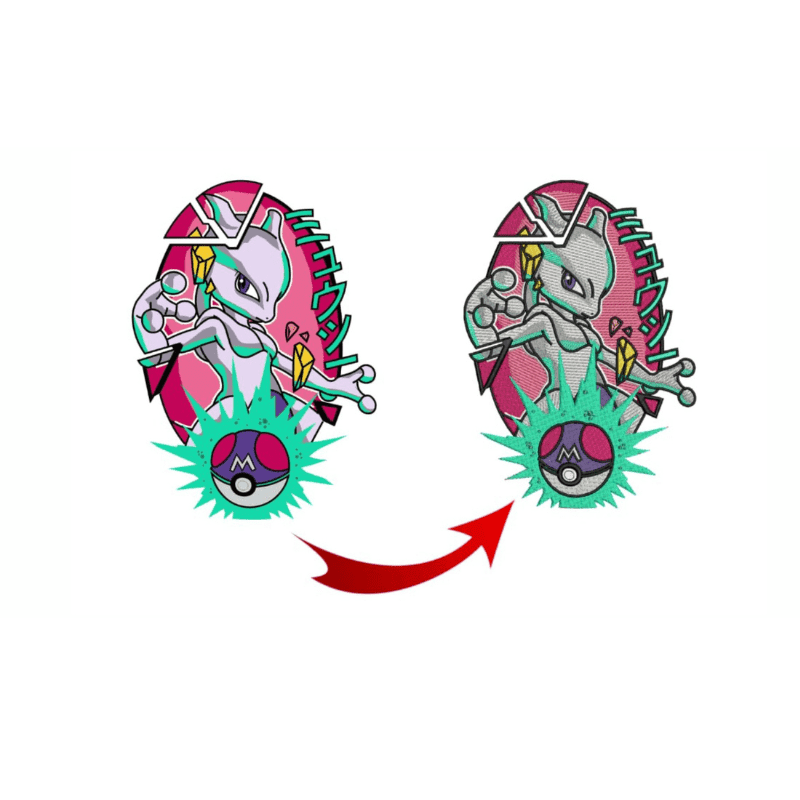Grasping the Needlework Digitizing Refine: Your Ultimate Guide
Embroidery digitizing is a thorough craft that needs accuracy and know-how to equate complex layouts right into digital layouts for device needlework. As craftsmens begin on this journey to master the needlework digitizing procedure, a thorough understanding of the basics establishes the structure for excellence.

Recognizing Embroidery Digitizing Essentials
Needlework digitizing fundamentals create the structure whereupon elaborate layouts are equated right into machine-readable layouts for specific sewing. This initial action in the embroidery digitizing process is essential for making certain that the last stitched product is a devoted depiction of the initial layout. Comprehending embroidery digitizing fundamentals entails understanding vital principles such as stitch kinds, sew instructions, density, rug, and pull payment.
Sew types play a vital duty in identifying the aesthetic and textural result of the stitched design. By choosing the suitable stitch type, whether it be satin, fill, or running stitch, digitizers can attain the wanted effect and enhance the general top quality of the needlework. Furthermore, stitch instructions affects the circulation and measurement of the design, while density establishes the spacing and protection of the stitches.
In addition, padding sewing gives security to the layout by protecting the material and preventing distortion throughout the embroidery process. Draw settlement is an additional vital consideration to counteract the natural propensity of fabric to contract when stitched. Understanding these needlework digitizing basics is basic for developing professional-quality stitched products.
Picking the Right Digitizing Software Application
Choosing the suitable digitizing software program is a critical choice that significantly affects the performance and top quality of the needlework digitizing process. Digitizing for Embroidery. When selecting the best digitizing software, it is necessary to take into consideration elements such as the complexity of designs you prepare to produce, the user-friendliness of the software program, the level of client assistance used, and the compatibility with your embroidery equipment
There are various digitizing software choices available in the market, ranging from basic programs for newbies to sophisticated software program for specialist digitizers. Some prominent choices consist of Wilcom EmbroideryStudio, Hatch Embroidery Software Program, and PulseID. These software plans provide a variety of tools and functions to help you produce intricate designs with convenience.
Before deciding, it is advisable to check out the different software program choices with complimentary tests or demonstrations to identify which one best fits your requirements. Additionally, reading reviews and seeking referrals from experienced digitizers can give beneficial insights into the strengths and weaknesses of each software application plan (Digitizing for Embroidery). By carefully evaluating your needs and contrasting the attributes of various digitizing software application, you can make an enlightened selection that improves your needlework digitizing workflow
Digitizing Tools and Methods

Optimizing Style Settings for Needlework
Grasping the complexities of design settings is basic in accomplishing ideal results in the embroidery digitizing procedure, building upon the foundation laid by comprehending digitizing tools and strategies. When optimizing layout settings for embroidery, it is necessary to consider elements such as stitch kind, density, underlay, pull payment, and enrollment. Stitch kind option impacts the overall look of the layout, with choices like satin, fill, wikipedia reference and running stitches providing various structures and impacts. Thickness refers to the spacing and density of stitches, impacting the style's insurance coverage and sturdiness. Proper underlay sewing offers stability and protects against fabric distortion, specifically for complicated layouts or on stretchy materials. Draw payment changes for textile stretch throughout stitching, making certain exact layout duplication. Enrollment setups straighten various components of the layout accurately, maintaining general design integrity. By fine-tuning these design setups, embroiderers can boost the top quality and precision of their embroidered creations.

Troubleshooting Common Digitizing Issues
When coming across common digitizing concerns throughout the needlework process, it is necessary to recognize the origin and execute efficient services immediately. One common problem is stitch thickness concerns, where stitches might be as well thick, triggering the material to tighten, or also sporadic, resulting in voids in the design. Readjusting the stitch thickness best site settings in the digitizing software can help solve this issue.
An additional frequent difficulty is string breaks during the needlework process. This can occur because of numerous factors such as wrong tension setups, dull needles, or making use of low-grade string. Ensuring correct maintenance of the embroidery equipment, including routine needle changes and stress adjustments, can reduce the incident of string breaks.
Furthermore, layout enrollment errors can cause misaligned components within the embroidery design. Inspecting the style positioning in the digitizing software application Click This Link and making needed adjustments before stitching can assist in avoiding this issue. By dealing with these typical digitizing problems quickly and successfully, you can make certain a smoother embroidery procedure and premium finished items.
Final Thought
To conclude, understanding the embroidery digitizing procedure calls for a solid understanding of the essentials, the appropriate choice of software application, and expertise of tools and methods. Maximizing style setups and fixing common digitizing issues are important actions in ensuring top quality embroidery results. By following these steps faithfully, one can achieve accuracy and performance in the digitizing procedure.